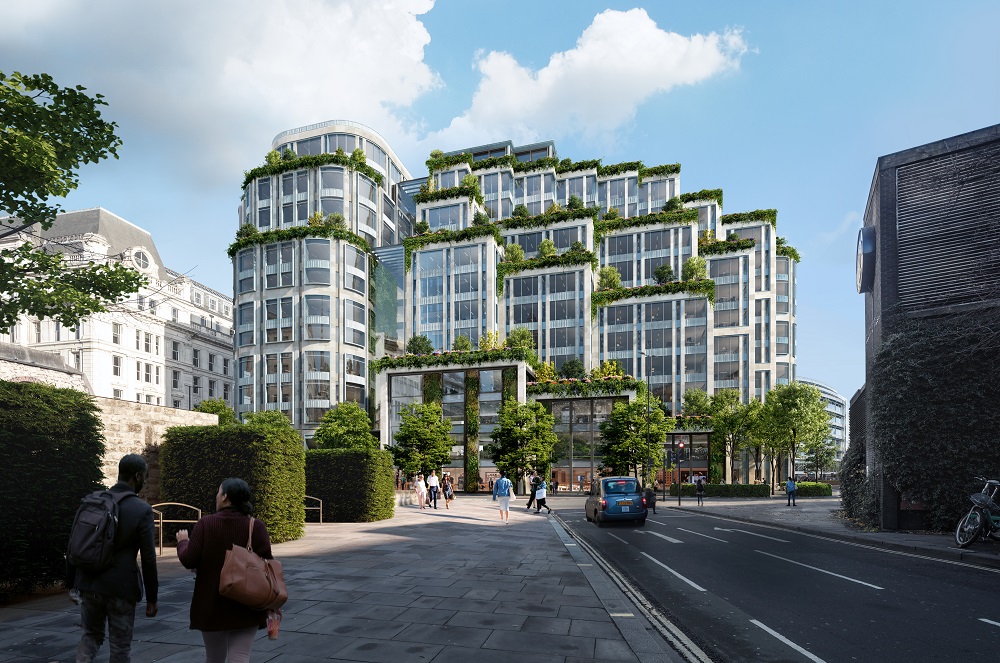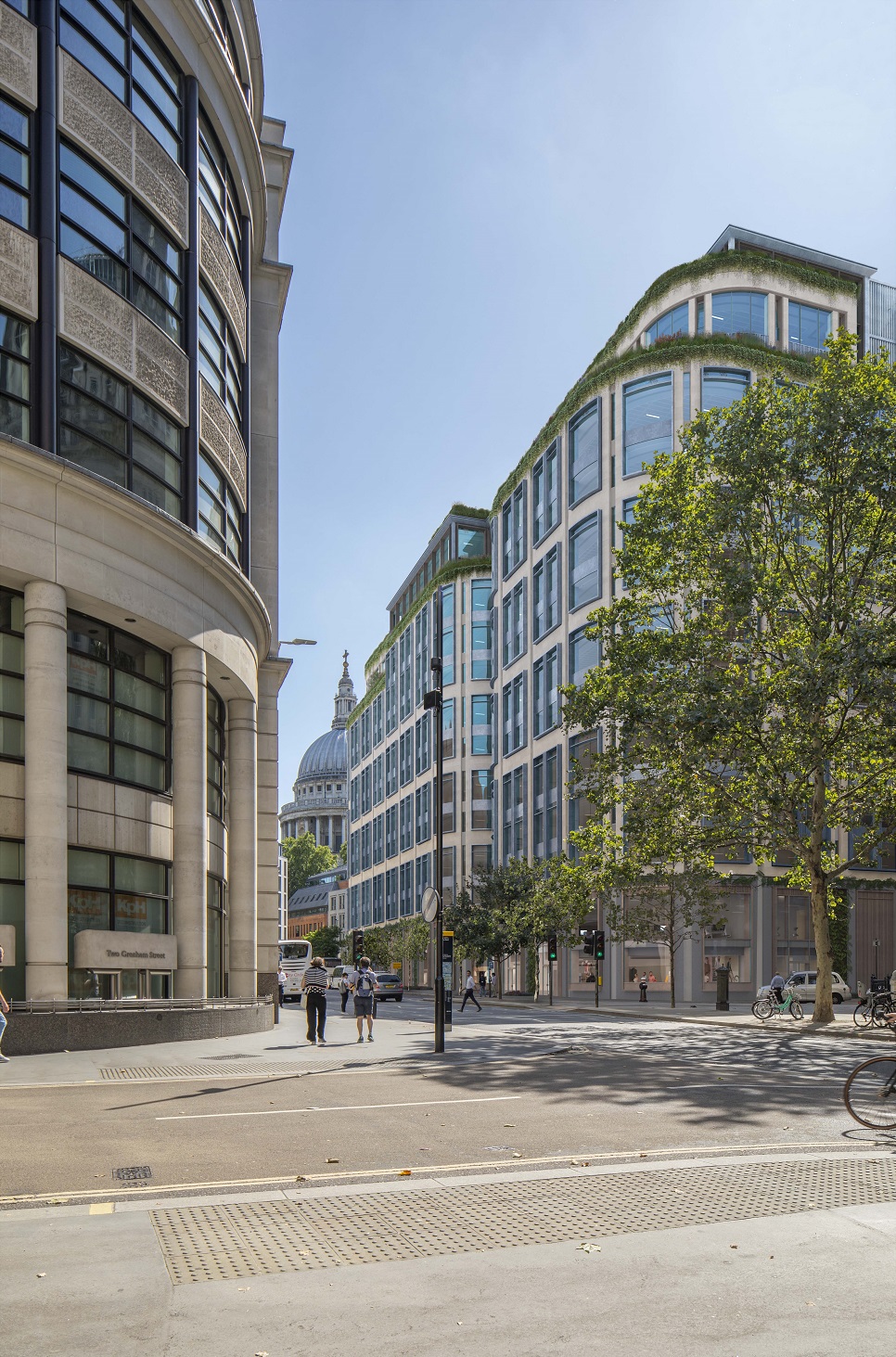The City of London Corporation has approved the transformation of a building that promises to significantly enhance the views of St Paul’s Cathedral at the gateway to Culture Mile.
The Planning and Transportation Committee approved a planning application to reimagine an existing building on Newgate Street, adding an additional four storeys to the current structure and re-using the granite and Portland Stone façade.
The high-quality mixed-use scheme will provide more than 67,500sqm of flexible office space as well as retail and leisure spaces, publicly and privately accessible roof terraces and a rooftop restaurant.
A public walkway through the building will be established improving pedestrian mobility at the popular St Paul’s Cathedral location. The building will also host several new urban greening measures such as green walls, green roofs, stepped garden terraces and the planting of 65 new trees.
The scheme exceeds the Mayor of London’s draft London Plan target Urban Greening Factor (UGF) score of 0.3 for commercial developments with an estimated UGF of 0.377.
NOW READ: Covid-19 has forever changed the City’s lending sector
The development also re-uses the existing structure in a sustainable manner.
Alastair Moss, chair of the Planning and Transportation Committee at the City of London Corporation, said: “This striking development offers significant enhancement to the gateway of Culture Mile, a vibrant cultural and creative area between Farringdon and Moorgate, and it enriches the King Edward Street view of the iconic St Paul’s Cathedral. Not only will the development improve aesthetics in the area, but the urban greening of this development offers many environmental benefits such as reducing pollution, absorbing sound and reducing flood risk.”
The City Corporation has a commitment to world-class sustainable development and has included the key aims of greening the City and more open spaces in the draft City Plan 2036.
As part of this, all developments and refurbishments are required to include a greening element to the building or public realm to contribute to improving biodiversity, rainwater run-off, air and noise pollution, temperature regulation and making the City a more visually desirable business location.
For the latest headlines from the City of London and beyond, follow City Matters on Twitter, Instagram and LinkedIn.








